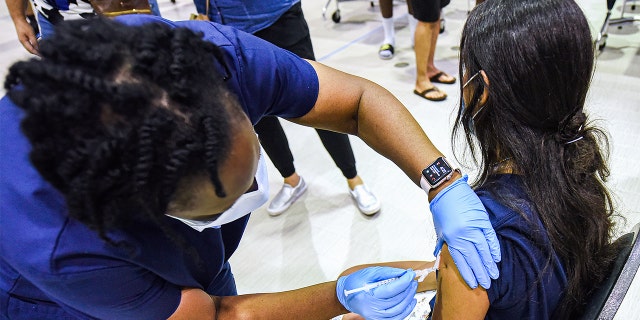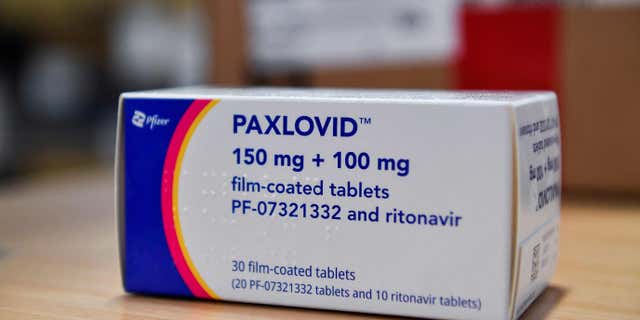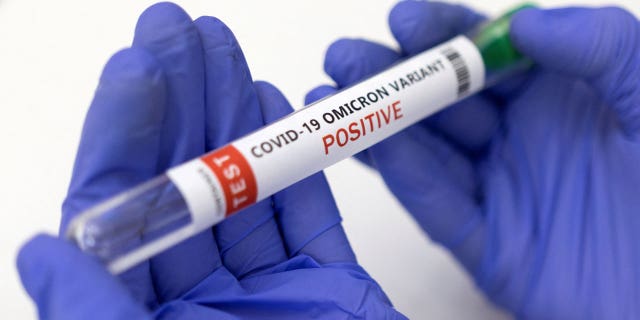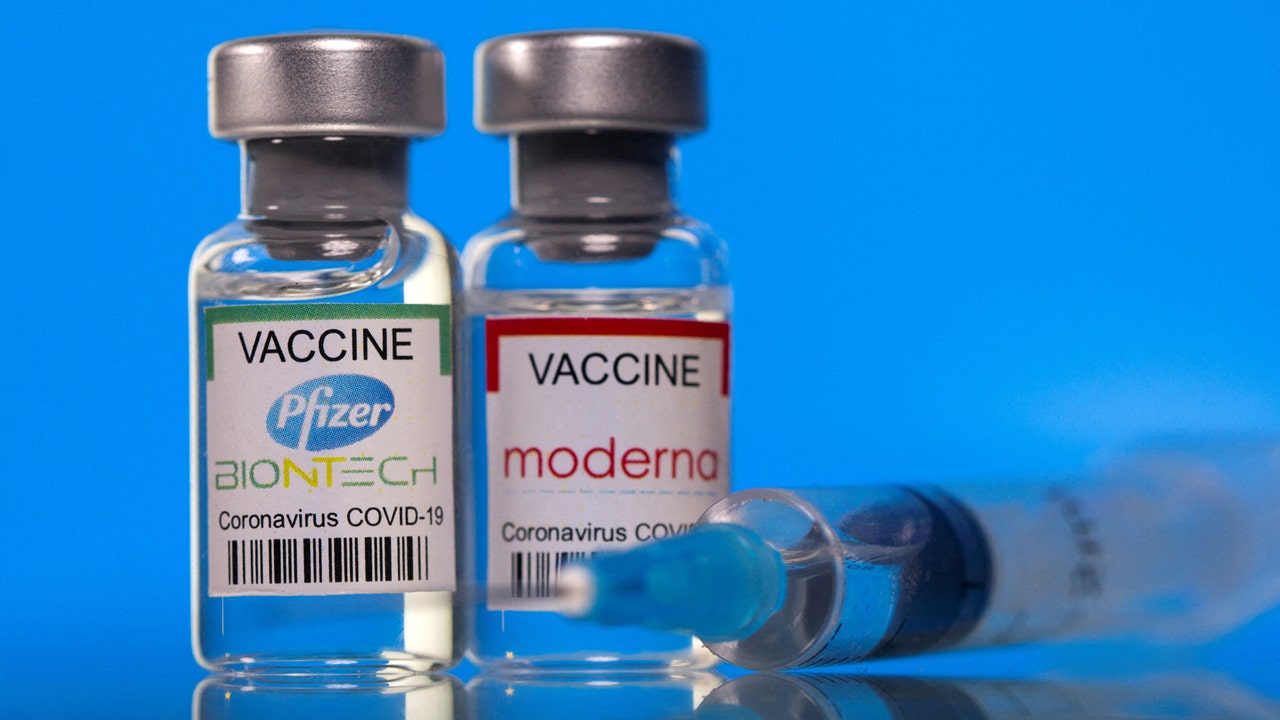Health
COVID public health emergency is over: Here’s what it means for you

It may seem that the COVID pandemic has been in the rearview mirror for many months — but as recently as May 11, the government officially ended the COVID-19 Public Health Emergency (PHE).
The Secretary of the Department of Health and Human Services (HHS) can declare a public health emergency under section 319 of the Public Health Service (PHS) Act.
The COVID-19 PHE had been in effect since January 2020 — for nearly three-and-a-half years.
So now that the public health emergency is officially over, how will things change?
WHO DOWNGRADES CORONAVIRUS PANDEMIC, NO LONGER A GLOBAL EMERGENCY
The Department of Health and Human Services (HHS) said that while the virus remains a public health priority, “we are now in a better place in our response than at any point of the pandemic and well-positioned to transition out of the emergency phase and end the COVID-19 PHE,” according to a website statement.
On May 11, the government officially ended the COVID-19 Public Health Emergency (PHE). “We need to get used to it and adjust to our new reality,” said one expert. (iStock)
“The pandemic is not over, but fortunately, it has trailed off,” said Martin Blaser, director of the Rutgers Center for Advanced Biotechnology and Medicine in New Jersey, in a statement to Fox News Digital.
“We are closer to the ‘endemic’ level than the ‘epidemic’ level,” he continued.
“It will likely be with us for some time, maybe indefinitely. So, we need to get used to it and adjust to our new reality.”
Cases and deaths have steadily declined
In terms of hospitalization trends from the Centers for Disease Control and Prevention (CDC), the U.S. has gone from peak weekly hospitalizations of over 100,000 in February 2021 and April 2022 to peak hospitalizations of 40,000 in October 2022 and May 2023.
“COVID-19 is still very much with us, but is more manageable given widespread immunity and effective anti-viral medications,” Dr. Shana Johnson, a physical medicine and rehabilitation physician in Scottsdale, Arizona, told Fox News Digital.
“The pandemic is not over, but fortunately, it has trailed off.”
“People who are 50 years and older and those with underlying conditions such as heart disease, lung disease and obesity are at higher risk for severe disease,” she added.
Deaths due to COVID-19 have followed a similar pattern, going from a peak of over 25,000 weekly deaths in February 2021 to under 5,000 in each month of 2023.
Access to testing, treatment
“The ending of the COVID-19 emergency declaration means people will face fewer COVID-related obligations, but also that they will receive fewer free resources to help prevent, detect and treat the disease,” Blaser of Rutgers said.

“There is now a lot of immunity in the human population due to natural infections and vaccines versus none earlier,” a doctor told Fox News Digital. (Paul Hennessy/SOPA Images/LightRocket via Getty Images)
During the COVID emergency, hundreds of Medicare and Medicaid waivers and flexibilities were made available to expand access to care.
Now, “given the current state of COVID-19, this excess capacity is no longer necessary,” the HHS said in its statement.
As the pricing of at-home COVID-19 tests and medications shifts to manufacturers and health insurance companies, Johnson of Arizona said individual health plans will determine the cost to consumers.
NEW REPORT SUGGESTS ‘PANIC BUYING’ OF MEDICATIONS BY PATIENTS AND PROVIDERS CAUSED DRUG SHORTAGES
“The biggest change will be in your pocketbook,” she said. “We are transitioning back to ‘check with your health plan’ for your coverage, with differences based on whether you are covered by Medicare, Medicaid, private insurance or no insurance.”
Although coverage for COVID testing will change, the U.S. government will continue to provide free tests in certain communities, the HHS website states.
People can still order tests online at COVIDtests.gov through the end of the month.

Those with compromised immune systems or other chronic diseases will have to be more vigilant than before COVID, a doctor noted. (iStock)
Another key change marked by the end of the emergency is that the HHS will no longer be able to access and monitor COVID lab test reports.
“HHS will no longer have this express authority to require this data from labs, which will affect the reporting of negative test results and impact the ability to calculate percent positivity [the percentage of positive results] for COVID-19 tests in some jurisdictions,” the agency stated.
“There is now a lot of immunity in the human population due to natural infections and vaccines.”
The Centers for Disease Control and Prevention (CDC) will continue to report COVID data, with some changes.
SENATOR RUBIO RELEASES REPORT ON THE ORIGINS OF COVID-19
For example, the agency will no longer highlight case and death data on its COVID Data Tracker.
Vaccine data will be reported on a monthly basis instead of weekly.
High-risk people should exercise caution, doctor says
For the most part, healthy people can resume their pre-pandemic lives if they haven’t already — but those with compromised immune systems or other chronic diseases will have to be more vigilant than before COVID, Blaser noted.

Antiviral treatments, such as Paxlovid and Lagevrio, will also be available, the HHS stated on its website. (REUTERS/Jennifer Lorenzini/File Photo)
“That will involve avoiding risky situations, some masking, continued testing and vaccinations, and seeing doctors if they are ill,” he said.
“There will be less protection from other people using masks, getting vaccines and doing other things that would reduce COVID exposure.”
Healthy people should still behave responsibly if they are sick, Blaser added.
“Wear a mask if you have respiratory symptoms and stay home if you know you are ill,” he recommended.
Potential for future COVID variants
As people relax overall cautions and become less reliant on vaccines, Blaser said a new wave of COVID variants may emerge faster and with more consequences — but he believes the country is in a much better position to handle it than it was in 2020.
MYOCARDITIS IN YOUNG MALES AFTER COVID VACCINE: NEW STUDY SUGGESTS WHAT MAY CAUSE THE RARE HEART CONDITION
“There is now a lot of immunity in the human population due to natural infections and vaccines versus none earlier,” he said.
“We also have a repertoire of treatments now available and probably a much-shortened development and production pipeline if important new variants emerge.”

Another key change marked by the end of the emergency is that the HHS will no longer be able to access and monitor COVID lab test reports. (REUTERS/Dado Ruvic/Illustration)
Blaser believes that if there is a new wave of COVID cases, many people will take action immediately to protect themselves and their families.
“We should have good ways to deal with it by restarting different degrees of social isolation (including masking), vaccination and treatment as necessary,” he said.
What won’t change with the end of the PHE
Even after the end of the public health emergency, people will still have access to COVID vaccinations at no cost.
Antiviral treatments, such as Paxlovid and Lagevrio, will also be available, the HHS stated on its website.
CLICK HERE TO SIGN UP FOR OUR HEALTH NEWSLETTER
As the CDC says on its website, “Medication to prevent severe COVID-19, such as Paxlovid, will remain available for free while supplies last. After that, the price will be determined by the medication manufacturer and your health insurance coverage.”
The FDA’s Emergency Use Authorizations (EUAs) will also continue to be in place for COVID-19 tests, treatments and vaccines.
Access to most Medicare telehealth flexibilities will also continue through December 2024, the HHS stated.
The government will also continue to provide support and services for those affected by long COVID.

Health
Flexitarian vs. Vegetarian Diets— What’s the Difference? | Woman's World

Sign Up
Create a free account to access exclusive content, play games, solve puzzles, test your pop-culture knowledge and receive special offers.
Already have an account? Login
Forgot your password?
Get back to the Sign In
Use left and right arrow keys to navigate between menu items.
Use escape to exit the menu.
Health
What to know about the new 'FLiRT' COVID variants

- According to the World Health Organization, the “FLiRT” variants of the SARS-CoV-2 coronavirus have been the dominant forms of the virus circulating globally this year.
- “FLiRT” is an acronym for the locations of the mutations the variants share on the virus’ spike protein.
- CDC data suggests COVID-related hospitalizations have trended downwards in recent weeks and the number of patients in emergency departments who have tested positive for COVID has been about flat for the past month.
The so-called FLiRT variants of SARS-CoV-2 coronavirus that cause COVID-19 have been the dominant forms of the virus circulating this year globally, according to the World Health Organization.
The moniker FLiRT is an acronym for the locations of the mutations the variants share on the virus’ spike protein. One of them, called KP.2, has become the most commonly circulating variant in the United States over the past month, according to the U.S. Centers for Disease Control and Prevention.
Here is what you need to know about FLiRT.
GREG GUTFELD: MARIANNETTE MILLER-MEEKS ‘MISSED AN OPPORTUNITY’ TO GRILL COVID ERA OFFICIAL ON THE LIVES RUINED
HOW ARE THE FLIRT VARIANTS DIFFERENT FROM PREVIOUS VARIANTS?
The FLiRT variants, which also include KP.2’s “parental” lineage JN.1, have three key mutations on their spike protein that could help them evade antibodies, according to Johns Hopkins University.
ARE THE FLIRT VARIANTS MORE CONTAGIOUS OR LIKELY TO CAUSE MORE SEVERE ILLNESS?
Dr. Aaron Glatt, chief of infectious diseases at Mount Sinai South Nassau Hospital in Oceanside, New York, and a spokesperson for the Infectious Diseases Society of America said he has not seen evidence of an uptick in disease or hospitalizations, based on the data he tracks and experience with his own patients.
U.S. experts and regulators will meet to discuss vaccine design on June 5, 2024, to address new COVID variants. (Reuters/Dado Ruvic/Illustration/File Photo)
“There have been some significant changes in the variants, but I think in recent times it’s not been as important, probably because of the immunity many, many people already have” from prior illness and vaccination.
CDC data suggests that COVID-related hospitalizations have trended downwards in recent weeks and the number of patients in emergency departments who have tested positive for COVID has been about flat for the past month.
Data suggests that COVID rates are also down year-over-year. The rate of COVID hospitalizations is less than half than a year earlier, and the amount of the antiviral Paxlovid currently being prescribed for COVID-19 is down around 60% from last year, according to analyst notes.
DO CURRENT VACCINES WORK AGAINST THE FLIRT VARIANTS?
The current vaccines should still have some benefit against the new variants, Glatt said.
Since 2022, health regulators have asked vaccine makers to design new versions of the COVID-19 vaccines to better target circulating variants. Last month, Europe’s regulator said vaccine makers should target the JN.1 variant. U.S. experts and regulators will meet to discuss vaccine design on June 5 after having postponed the meeting from May 16 in order to have more time to “obtain surveillance data and other information.”
Makers of vaccines based on messenger RNA (mRNA) technology – Pfizer with partner BioNTech, and Moderna – say they are waiting for the June 5 meeting before settling on the design of their next vaccines.
Novavax, which makes a more traditional protein-based vaccine that takes longer to manufacture, has begun producing a shot targeting JN.1 consistent with recommendations from European regulators.
Health
Happy Birthday, Janet Jackson! Take a Look at Her 10 Best Songs, Ranked

Sign Up
Create a free account to access exclusive content, play games, solve puzzles, test your pop-culture knowledge and receive special offers.
Already have an account? Login
Forgot your password?
Get back to the Sign In
Use left and right arrow keys to navigate between menu items.
Use escape to exit the menu.
-

 Politics1 week ago
Politics1 week agoSouthern border migrant encounters decrease slightly but gotaways still surge under Biden
-

 Politics1 week ago
Politics1 week agoDem newcomer aims for history with primary win over wealthy controversial congressman
-

 World1 week ago
World1 week agoSlovakia PM Robert Fico in ‘very serious’ condition after being shot
-

 News1 week ago
News1 week agoSmall but mighty Nimble becomes first mixed-breed dog to win Westminster agility title
-

 Politics1 week ago
Politics1 week agoVulnerable Dem incumbents move to the center in key swing states as Biden panders to far-left base
-

 World1 week ago
World1 week agoCanadian Nobel-winning author Alice Munro dies aged 92
-

 World1 week ago
World1 week ago‘Monstrous crime’: World reacts to attack on Slovakia’s prime minister
-

 News1 week ago
News1 week agoHow a migrant aid group got caught up in a right-wing social media thread : Consider This from NPR














